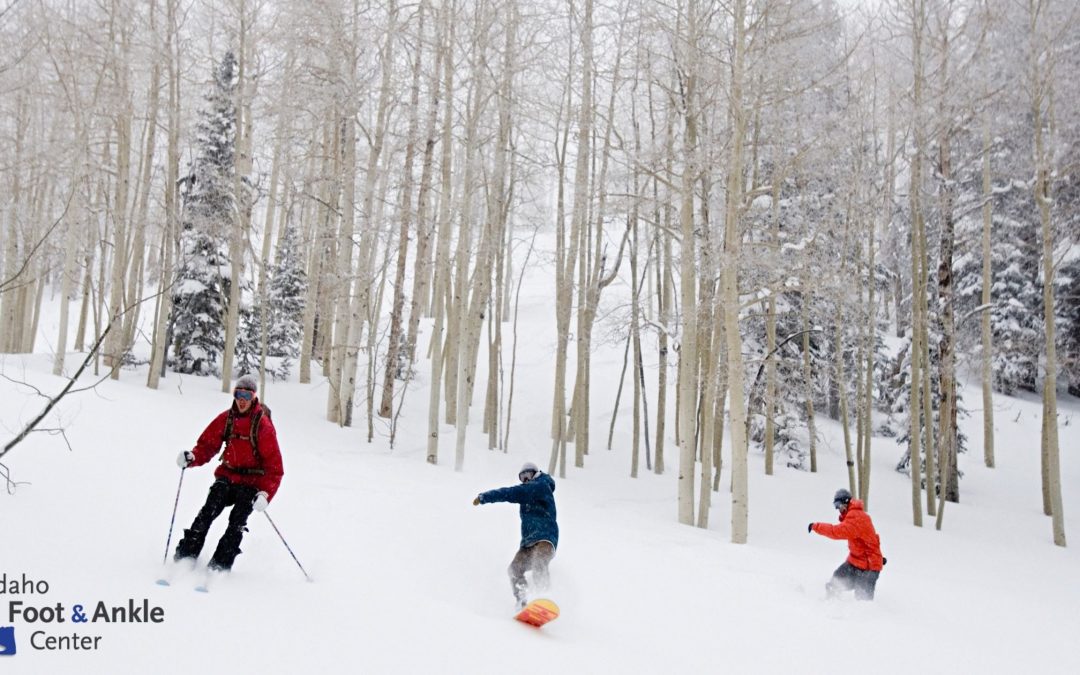The snow is here and the ski resorts are open! Many people enjoy the various sports the winter snow can offer. There is quite a debate between those avid in winter sports about which is better, snowboarding or skiing? While the answer to that depends on who you talk to and what their experience has been like, many enjoy the benefits of both of these sports all winter long. Unfortunately, these sports can also bring the risk of injuries to your feet and ankles. The American College of Foot and Ankle Surgeons recommends you follow these tips to help make sure your trip to the slopes ends in happiness and hot cocoa instead of sprains or surgeries!
- Make sure your ski boots or snowboard boots fit properly.
- Condition your muscles with exercises approximately 2 weeks before your trip. Squats, lunges, planks, and mountain climbers can all help get your body ready. Contact your Podiatrist for stretching and strengthening exercises that can help get you back in shape.
- Never hit the slopes alone. Take a friend with you and seek help quickly if an injury occurs.
- Wear insulated socks appropriate for temperatures. Consider having a change of socks for wet conditions. If toes or feet feel cold and/or numb, take a break and warm up.
- Participate within your own skill level.
- If you suffer an injury, contact your Podiatrist to determine if it is a sprain, fracture, or stretched/torn tendon or ligament. Without prompt treatment, these conditions could lead to chronic ankle stability, arthritis, tissue damage, or problems with foot alignment.
Whether you like snowboarding or skiing better, snowboarders need to be aware they are more susceptible to some injuries than skiers! Snowboard boots are more flexible than ski boots, which means midfoot and ankle sprains are more likely to occur because the boot’s flexibility allows for more impact at the tip of the toes.
To avoid injury, snowboarders should:
1. Wear stiffer boots to better protect the ankles and more firmly hold the feet in position.
2. Be careful of landings while catching air. Flat landing zones can cause increased compression-type injury to the foot and ankle.
3. Make sure boots are well fitting, in good condition, and are set up properly in bindings.
Sports can be hard on the feet because of quick repetitive movements, constricting footwear, and/or increased exposure to injury or trauma. With a little preparation and caution, you can enjoy the snow on your board or your skis all winter long. If you currently have a foot or ankle problem, be sure to contact Dr. Kylin Kovac or Dr. Jed Erickson for an appointment before you hit the slopes! It is also equally important if you sustain any type of injury to your feet or ankles to have it evaluated by a Podiatrist at Idaho Foot & Ankle Center. We have same day appointments and we offer x-rays right in our office. Don’t let foot or ankle pain ruin your winter fun!
Some Content Provided By The ACFAS.



Recent Comments